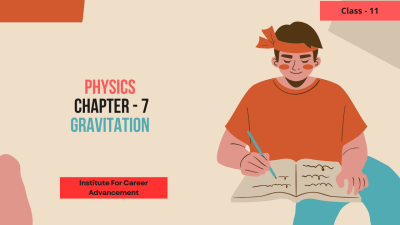Course description
Welcome to the fascinating world of fluids! This Class 11 physics course, Mechanical Properties of Fluids, dives deep into the unique behavior of liquids and gases, collectively known as fluids. Get ready to explore how pressure, flow, and other properties influence how fluids interact with their surroundings.
1. Beyond Solids: Introducing Fluids
A Change of Focus: You've already grasped the mechanical properties of solids. This course delves into the world of fluids, substances that can flow and change shape readily. Liquids (like water) and gases (like air) exhibit distinct behaviors compared to solids, and understanding these differences is crucial.
2. Pressure in Fluids at Rest:
Pressure: Pushing in All Directions: Imagine dipping your hand in water. You feel pressure pushing in all directions, not just downwards. This course introduces the concept of pressure and how it acts in all directions at any point within a fluid at rest. You'll learn how pressure changes with depth in a fluid and how it's used in various applications like hydraulic machines.
3. Buoyancy and Archimedes' Principle:
Float or Sink?: Why do some objects float in water while others sink? This unit explores buoyancy, the upward force exerted by a fluid on an immersed object. You'll learn about Archimedes' Principle, which explains the relationship between buoyancy, the weight of the displaced fluid, and the object's ability to float or sink.
4. Fluid Flow and Viscosity:
Fluids on the Move: Fluids aren't always still! This course delves into fluid flow, the movement of fluids from regions of high pressure to low pressure. You'll be introduced to viscosity, a property of a fluid that resists its flow. Honey has high viscosity, while water flows more easily due to its lower viscosity. The course will explore how factors like temperature and the type of fluid affect viscosity.
5. Bernoulli's Principle and Applications:
Understanding Fluid Dynamics: Get ready for a game-changer! This unit introduces Bernoulli's principle, a fundamental concept in fluid dynamics. It explains the relationship between pressure, velocity, and energy in a moving fluid. As the speed of a fluid increases in a stream, the pressure acting on it decreases. This principle helps us understand phenomena like lift on airplane wings, where the faster-moving air flowing over the curved upper surface creates lower pressure, generating lift.
6. Real-World Applications:
Putting It All Together: The final part of the course will showcase how these concepts apply to real-world scenarios. You'll see examples like:
Understanding how pressure cookers work (considering pressure and boiling point).
Explaining why ships float (applying Archimedes' Principle).
Grasping the concept of lift on airplanes (using Bernoulli's principle).
By mastering these topics, you'll gain a strong foundation in understanding how fluids behave. This knowledge is essential for various fields like hydraulic engineering, aeronautics, and even understanding everyday phenomena like how water flows through pipes.
Additionally, this course will equip you with:
Enhanced problem-solving skills: You'll learn to apply concepts of pressure, buoyancy, viscosity, and Bernoulli's principle to solve problems involving fluids.
Improved visualization skills: Visualizing fluid flow can be challenging. This course will help you develop these skills.
Stronger foundation in physics: Understanding fluid mechanics is a cornerstone of physics and engineering.
তরলের আকর্ষণীয় জগতে আপনাকে স্বাগতম! এই একাদশ শ্রেণীর পদার্থবিজ্ঞান কোর্স, তরলের যান্ত্রিক বৈশিষ্ট্য, তরল এবং গ্যাসের অনন্য আচরণের গভীরে ডুব দেয়, যা সম্মিলিতভাবে তরল হিসাবে পরিচিত। চাপ, প্রবাহ এবং অন্যান্য বৈশিষ্ট্যগুলি কীভাবে তরলগুলি তাদের আশেপাশের সাথে মিথস্ক্রিয়া করে তা অন্বেষণ করার জন্য প্রস্তুত হন।
1টি। কঠিন পদার্থের বাইরেঃ তরলের প্রবর্তন
ফোকাসের পরিবর্তনঃ আপনি ইতিমধ্যেই কঠিন পদার্থের যান্ত্রিক বৈশিষ্ট্যগুলি বুঝতে পেরেছেন। এই কোর্সটি তরল পদার্থের জগতে প্রবেশ করে, যে পদার্থগুলি সহজেই প্রবাহিত হতে পারে এবং আকৃতি পরিবর্তন করতে পারে। তরল (যেমন জল) এবং গ্যাস (যেমন বায়ু) কঠিন পদার্থের তুলনায় স্বতন্ত্র আচরণ প্রদর্শন করে এবং এই পার্থক্যগুলি বোঝা অত্যন্ত গুরুত্বপূর্ণ।
2. বিশ্রামের সময় তরলের চাপঃ
চাপঃ সমস্ত দিকে ঠেলে দেওয়াঃ জলে হাত ডুবিয়ে রাখার কথা ভাবুন। আপনি কেবল নীচের দিকে নয়, চারদিকে চাপ অনুভব করেন। এই কোর্সটি চাপের ধারণা এবং বিশ্রামের সময় তরলের মধ্যে যে কোনও সময়ে এটি কীভাবে সমস্ত দিকে কাজ করে তার পরিচয় দেয়। আপনি শিখবেন কিভাবে একটি তরলের গভীরতার সাথে চাপ পরিবর্তিত হয় এবং কিভাবে এটি জলবাহী মেশিনের মতো বিভিন্ন প্রয়োগে ব্যবহৃত হয়।
3. বুয়েন্সি এবং আর্কিমিডিসের নীতিঃ
ফ্লোট নাকি সিঙ্ক? : কেন কিছু বস্তু জলে ভাসমান থাকে এবং অন্যগুলি ডুবে যায়? এই এককটি ভাসমানতা অন্বেষণ করে, একটি নিমজ্জিত বস্তুর উপর একটি তরল দ্বারা আরোপিত ঊর্ধ্বমুখী বল। আপনি আর্কিমিডিসের নীতি সম্পর্কে শিখবেন, যা ভাসমানতা, স্থানচ্যুত তরলের ওজন এবং বস্তুটির ভাসমান বা ডুবে যাওয়ার ক্ষমতার মধ্যে সম্পর্ক ব্যাখ্যা করে।
4. তরল প্রবাহ এবং সান্দ্রতাঃ
চলন্ত তরলঃ তরল সবসময় স্থির থাকে না! এই গতিপথটি তরল প্রবাহের মধ্যে প্রবেশ করে, উচ্চ চাপের অঞ্চল থেকে নিম্ন চাপের অঞ্চলে তরলের চলাচল। আপনি সান্দ্রতার সাথে পরিচিত হবেন, একটি তরলের বৈশিষ্ট্য যা তার প্রবাহকে প্রতিরোধ করে। মধুর সান্দ্রতা বেশি, অন্যদিকে কম সান্দ্রতার কারণে জল আরও সহজে প্রবাহিত হয়। তাপমাত্রা এবং তরলের প্রকারের মতো বিষয়গুলি কীভাবে সান্দ্রতাকে প্রভাবিত করে তা কোর্সটি অন্বেষণ করবে।
5. বার্নৌলির নীতি ও প্রয়োগঃ
ফ্লুইড ডাইনামিক্স বোঝাঃ গেম-চেঞ্জারের জন্য প্রস্তুত হোন! এই এককটি বার্নৌলির নীতির পরিচয় দেয়, যা তরল গতিবিদ্যার একটি মৌলিক ধারণা। এটি একটি গতিশীল তরলে চাপ, বেগ এবং শক্তির মধ্যে সম্পর্ক ব্যাখ্যা করে। একটি স্রোতে তরলের গতি বাড়ার সাথে সাথে তার উপর ক্রিয়াশীল চাপ হ্রাস পায়। এই নীতিটি আমাদের বিমানের ডানাগুলিতে উত্তোলনের মতো ঘটনাগুলি বুঝতে সহায়তা করে, যেখানে বাঁকা উপরের পৃষ্ঠের উপর দিয়ে প্রবাহিত দ্রুত-চলমান বায়ু নিম্ন চাপ তৈরি করে, উত্তোলনের সৃষ্টি করে।
6টি। রিয়েল-ওয়ার্ল্ড অ্যাপ্লিকেশনঃ
এটিকে একসাথে রাখাঃ কোর্সের চূড়ান্ত অংশটি দেখাবে যে কীভাবে এই ধারণাগুলি বাস্তব-বিশ্বের পরিস্থিতিতে প্রযোজ্য। আপনি যেমন উদাহরণ দেখতে পাবেনঃ
প্রেসার কুকার কীভাবে কাজ করে তা বোঝা (considering pressure and boiling point).
জাহাজ কেন ভাসছে তা ব্যাখ্যা করা (আর্কিমিডিসের নীতি প্রয়োগ করা)
বিমানে উত্তোলনের ধারণাটি গ্রহণ করা (বার্নৌলির নীতি ব্যবহার করে)
এই বিষয়গুলিতে দক্ষতা অর্জনের মাধ্যমে, আপনি তরলগুলি কীভাবে আচরণ করে তা বোঝার জন্য একটি শক্তিশালী ভিত্তি অর্জন করবেন। এই জ্ঞান জলবিদ্যুৎ প্রকৌশল, বিমানবিদ্যা এবং এমনকি পাইপের মধ্য দিয়ে জল কীভাবে প্রবাহিত হয় তার মতো দৈনন্দিন ঘটনাগুলি বোঝার জন্য প্রয়োজনীয়।
উপরন্তু, এই কোর্সটি আপনাকে নিম্নলিখিত বিষয়গুলি দিয়ে সজ্জিত করবেঃ
বর্ধিত সমস্যা সমাধানের দক্ষতাঃ আপনি তরল সম্পর্কিত সমস্যা সমাধানের জন্য চাপ, উচ্ছ্বাস, সান্দ্রতা এবং বার্নৌলির নীতির ধারণাগুলি প্রয়োগ করতে শিখবেন।
উন্নত ভিজ্যুয়ালাইজেশন দক্ষতাঃ তরল প্রবাহের ভিজ্যুয়ালাইজেশন চ্যালেঞ্জিং হতে পারে। এই কোর্সটি আপনাকে এই দক্ষতাগুলি বিকাশে সহায়তা করবে।
পদার্থবিজ্ঞানে শক্তিশালী ভিত্তিঃ তরল বলবিজ্ঞান বোঝা পদার্থবিজ্ঞান এবং প্রকৌশলের একটি ভিত্তি।



















